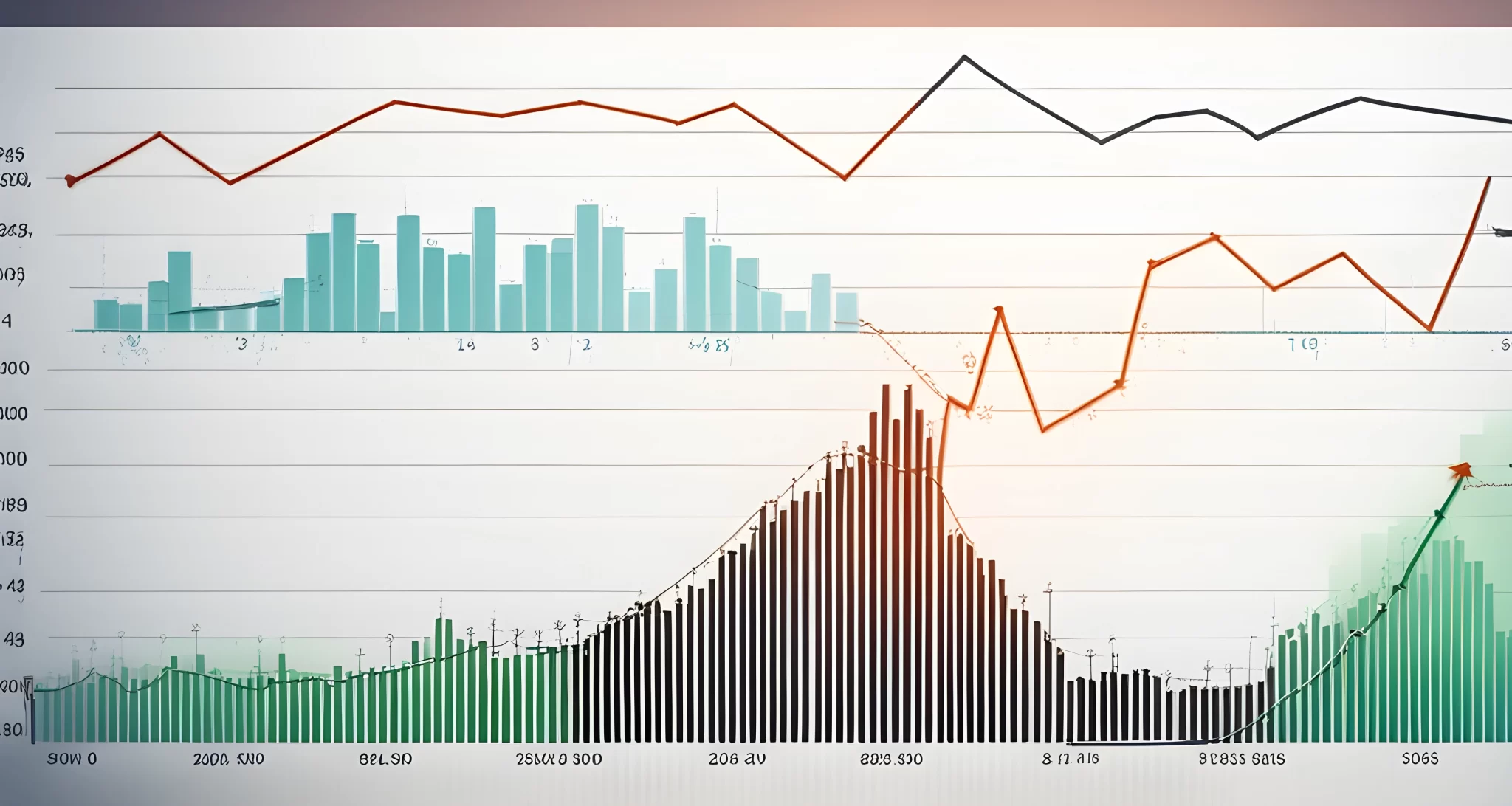Non-Directional Investing
Non-Directional Investing, also known as market neutral investing, is a strategy that takes advantage of market inefficiencies and relative pricing discrepancies rather than relying on the market moving in a specific direction. This approach can be particularly effective in volatile markets, where prices may be overreacting to news or events.
One of the key advantages of non-directional investing is its ability to capitalize on opportunities in a market that is experiencing increased volatility. By identifying and taking advantage of these inefficiencies, investors can potentially profit from the ups and downs of the market without having to predict the direction in which it will move.
This strategy involves carefully analyzing the market and identifying mispriced securities, then taking positions to profit from the correction of these pricing discrepancies. It requires a deep understanding of market dynamics and a keen eye for spotting opportunities that others may overlook.
Non-directional investing can be an effective way for investors to hedge against volatility and generate returns even when the overall market is turbulent. By focusing on relative pricing discrepancies and market inefficiencies, investors can potentially generate returns regardless of whether the market is trending up or down.
To learn more about long-term stability investment strategies, check out our article on Long-Term Stability Investment.
In conclusion, non-directional investing offers a unique approach to navigating volatile markets by capitalizing on relative pricing discrepancies and market inefficiencies. This strategy can provide investors with opportunities to generate returns regardless of the overall market direction, making it a valuable tool for managing risk and seeking profits in turbulent times.

Hedging Against Volatility
In a volatile market, investors face uncertainties and potential losses. However, there are strategies to mitigate these risks, such as hedging against volatility. One effective way to protect investments is by using options, such as buying protective put options on individual stocks or broader indices like the S&P 500. These options give the holder the right to sell at a specified price, helping to limit downside risk in a volatile market.
By strategically implementing hedging strategies, investors can safeguard their assets while still participating in market opportunities. Diversification is another key strategy for managing risk. By spreading investments across different asset classes and industries, investors can reduce the impact of any single investment’s performance on their overall portfolio.
Rebalancing is also crucial in managing risk in a volatile market. This involves periodically adjusting the portfolio’s asset allocation to maintain the desired level of risk exposure. This can help investors avoid overexposure to a particular asset class or industry, reducing the impact of market volatility on their portfolio.
Additionally, non-directional investing can be advantageous in a volatile market. This approach involves making investments that don’t rely on the market moving in a specific direction to generate returns. Instead, non-directional investors profit from factors like volatility and time decay.
In conclusion, mitigating financial risk is essential for achieving better returns Financial Risk Management Tactics. By employing strategies such as hedging against volatility, diversification, and rebalancing, investors can protect their assets and capitalize on market opportunities even in uncertain times. It’s important for investors to stay informed about various investment strategies and remain agile in response to changing market conditions.

Diversification
Diversification is a crucial strategy for investors looking to navigate the uncertainties of a volatile market. By spreading investments across different asset classes, such as stocks, bonds, commodities, and cash, investors can reduce their overall risk exposure. This is because different asset classes often react differently to market fluctuations and economic events.
In a volatile market, the value of a single asset class can fluctuate dramatically in response to unforeseen events. However, by diversifying their portfolio, investors can mitigate the impact of such events and maintain more stable returns over time. This is because a single event affecting one asset class may have a smaller impact on a diversified portfolio.
One way to implement diversification is by employing non-directional investing strategies, which focus on profiting from market volatility regardless of the direction of market movements. Additionally, hedging against volatility can also be an effective way to protect investments from sudden market downturns.
It’s important for investors to regularly rebalance their diversified portfolio to ensure that it continues to align with their investment goals and risk tolerance. By periodically reviewing and adjusting the asset allocation, investors can maintain the desired level of diversification and risk exposure.
For more detailed information on financial diversification strategies, you can refer to Financial diversification strategies. This article provides valuable insights into the various methods and approaches that investors can use to diversify their financial portfolios effectively.
In conclusion, diversification is a key strategy for managing risk in a volatile market. By spreading investments across different asset classes and regularly rebalancing the portfolio, investors can mitigate the impact of market fluctuations and maintain more stable returns over time.
By implementing these strategies, investors can navigate the challenges of a volatile market with confidence and achieve their long-term financial objectives.

Rebalancing
Regularly rebalancing a portfolio is a crucial strategy to consider when investing in a volatile market. This proactive approach to portfolio management can help investors maintain a desired asset allocation and reduce exposure to specific asset classes that may become more volatile.
By selling appreciated positions and reinvesting the proceeds, investors can ensure that their portfolio remains aligned with their risk tolerance and investment objectives. This helps mitigate the impact of market volatility, as it allows investors to take profits from asset classes that have performed well and reallocate them to those that may be undervalued or have the potential for growth.
Rebalancing also provides the opportunity to review and adjust the overall investment strategy in response to changing market conditions. This can help ensure that the portfolio remains diversified and well-positioned to weather market fluctuations.
To learn more about strategic risk handling, check out Strategic Risk Handling.
In summary, regular rebalancing is an effective way to manage risk and maintain a disciplined approach to investing in a volatile market. By periodically reviewing and adjusting the portfolio’s asset allocation, investors can reduce the impact of market volatility and stay on track towards their long-term financial goals.

Conclusion
Investing in a volatile market can be a daunting task, but it doesn’t have to be. By implementing the right strategies, investors can protect their assets and potentially profit from the increased volatility. Non-directional investing, hedging against volatility, diversification, and rebalancing are all important strategies to consider.
Non-directional investing allows investors to profit from market movements without predicting the direction of those movements. This strategy can be particularly useful in volatile markets, where traditional directional investing may be more challenging.
Hedging against volatility is another crucial strategy for navigating a volatile market. By using options or other derivatives, investors can protect their portfolios from significant losses during turbulent market conditions.
Diversification is a timeless strategy that remains essential in volatile markets. By spreading investments across different asset classes and industries, investors can reduce their overall risk exposure.
Rebalancing is also critical in a volatile market. Regularly reviewing and adjusting the portfolio’s asset allocation helps to ensure that it remains aligned with the investor’s risk tolerance and long-term financial goals.
By understanding and implementing these strategies, investors can navigate the ups and downs of a volatile market more effectively. It’s important to remember that no strategy can guarantee success in every market condition, but by being proactive and prepared, investors can better position themselves for long-term success.
For further insights on risk management for investment opportunities, readers can refer to Unlocking Investment Risks. This article provides valuable information on addressing the issue of risk management in investment opportunities, which complements the strategies discussed here for investing in a volatile market.
In conclusion, investing in a volatile market presents challenges, but with the right strategies, investors can protect their assets and potentially profit from the increased volatility. Non-directional investing, hedging against volatility, diversification, and rebalancing are all important strategies to consider. By understanding and implementing these strategies, investors can navigate the ups and downs of a volatile market more effectively.
FAQ
What is non-directional investing?
Non-directional investing takes advantage of market inefficiencies and relative pricing discrepancies, rather than relying on the market moving in a specific direction. this strategy can help investors capitalize on opportunities in volatile markets.
How can investors hedge against volatility?
Investors can hedge against volatility by using options, such as buying protective put options on individual stocks or broader indices like the s&p 500. these options give the holder the right to sell at a specified price, helping to limit downside risk.
Why is diversification important in a volatile market?
Diversification is important in a volatile market because spreading investments across different types of assets can help reduce overall risk. different asset classes often react to different stimuli, so a single event affecting one asset class may have a smaller impact on a diversified portfolio.
What is the benefit of regularly rebalancing a portfolio?
Regularly rebalancing a portfolio can help maintain a desired asset allocation and reduce exposure to specific asset classes that may become more volatile. this can involve selling appreciated positions and reinvesting the proceeds.
